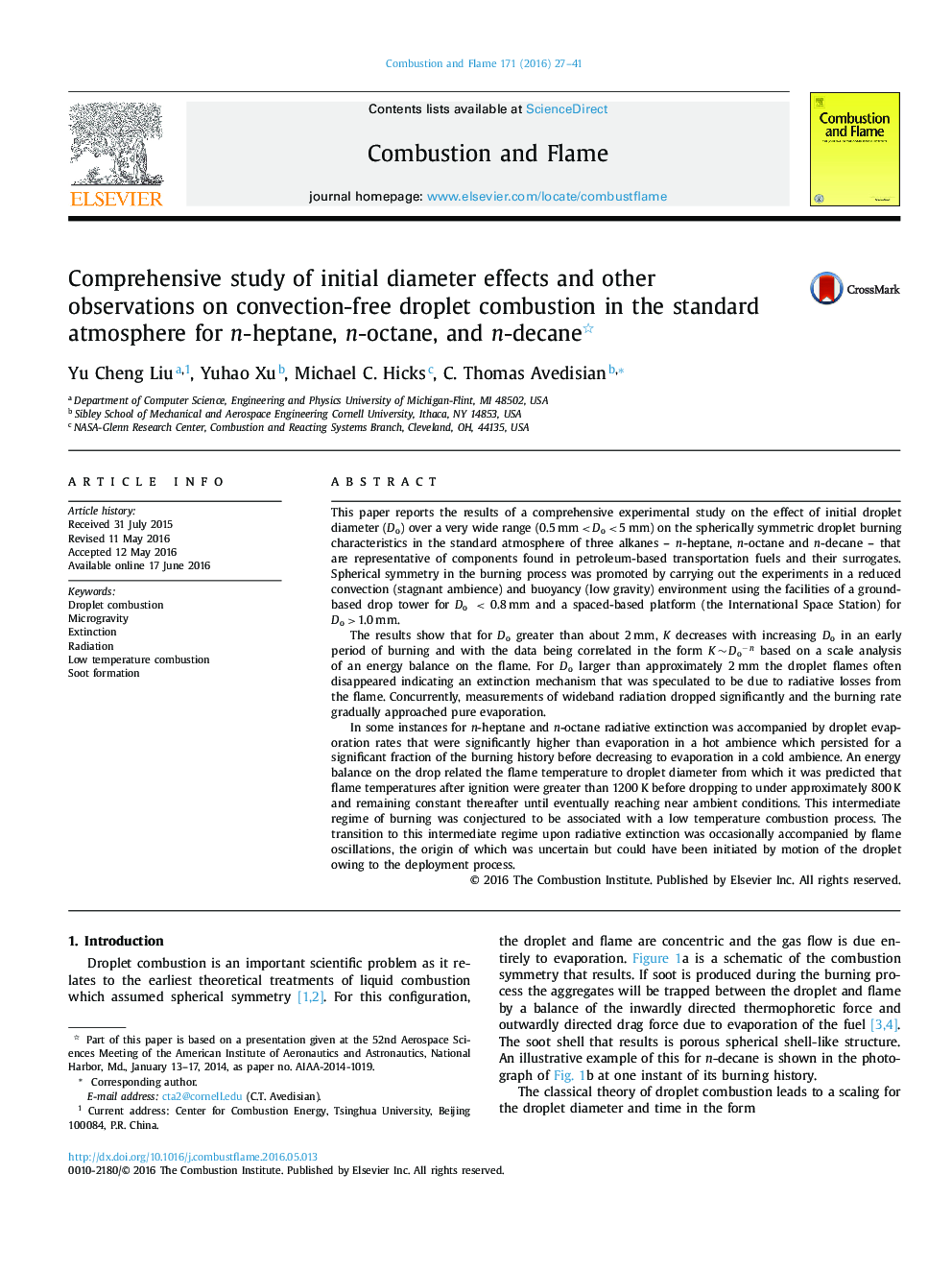| کد مقاله | کد نشریه | سال انتشار | مقاله انگلیسی | نسخه تمام متن |
|---|---|---|---|---|
| 168450 | 457927 | 2016 | 15 صفحه PDF | دانلود رایگان |

This paper reports the results of a comprehensive experimental study on the effect of initial droplet diameter (Do) over a very wide range (0.5 mm < Do < 5 mm) on the spherically symmetric droplet burning characteristics in the standard atmosphere of three alkanes – n-heptane, n-octane and n-decane – that are representative of components found in petroleum-based transportation fuels and their surrogates. Spherical symmetry in the burning process was promoted by carrying out the experiments in a reduced convection (stagnant ambience) and buoyancy (low gravity) environment using the facilities of a ground-based drop tower for Do < 0.8 mm and a spaced-based platform (the International Space Station) for Do > 1.0 mm.The results show that for Do greater than about 2 mm, K decreases with increasing Do in an early period of burning and with the data being correlated in the form K ∼ Do−n based on a scale analysis of an energy balance on the flame. For Do larger than approximately 2 mm the droplet flames often disappeared indicating an extinction mechanism that was speculated to be due to radiative losses from the flame. Concurrently, measurements of wideband radiation dropped significantly and the burning rate gradually approached pure evaporation.In some instances for n-heptane and n-octane radiative extinction was accompanied by droplet evaporation rates that were significantly higher than evaporation in a hot ambience which persisted for a significant fraction of the burning history before decreasing to evaporation in a cold ambience. An energy balance on the drop related the flame temperature to droplet diameter from which it was predicted that flame temperatures after ignition were greater than 1200 K before dropping to under approximately 800 K and remaining constant thereafter until eventually reaching near ambient conditions. This intermediate regime of burning was conjectured to be associated with a low temperature combustion process. The transition to this intermediate regime upon radiative extinction was occasionally accompanied by flame oscillations, the origin of which was uncertain but could have been initiated by motion of the droplet owing to the deployment process.
Journal: Combustion and Flame - Volume 171, September 2016, Pages 27–41